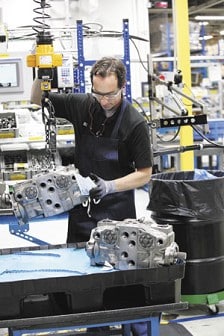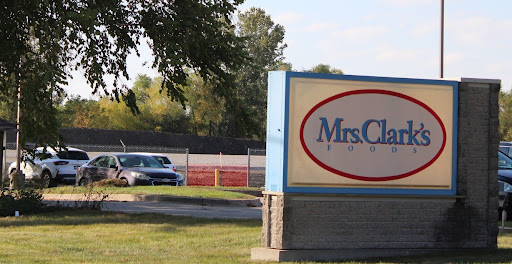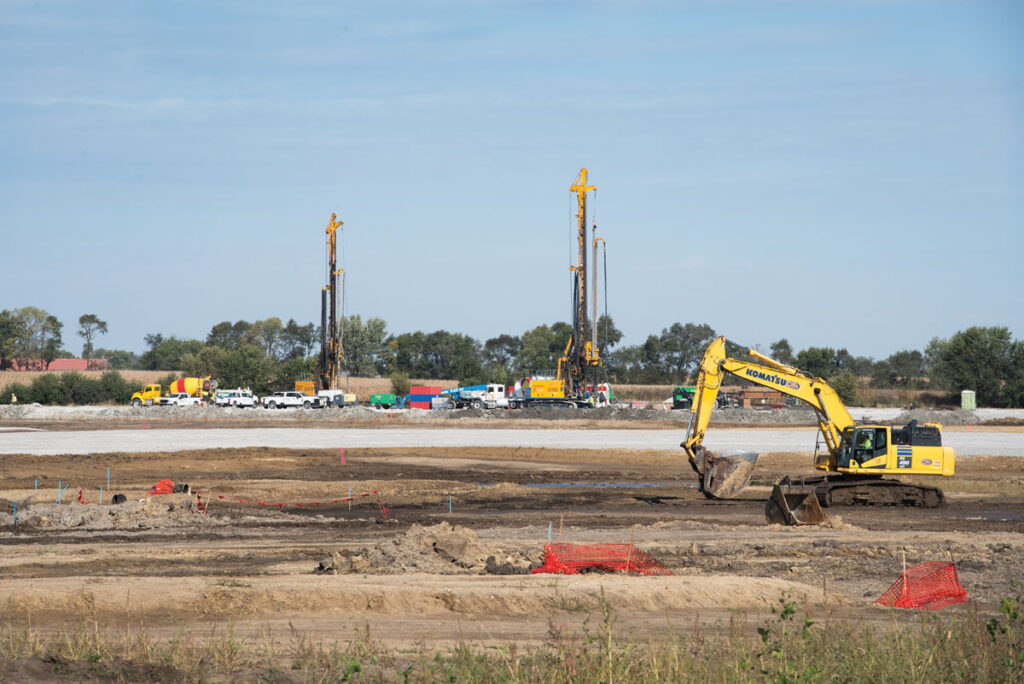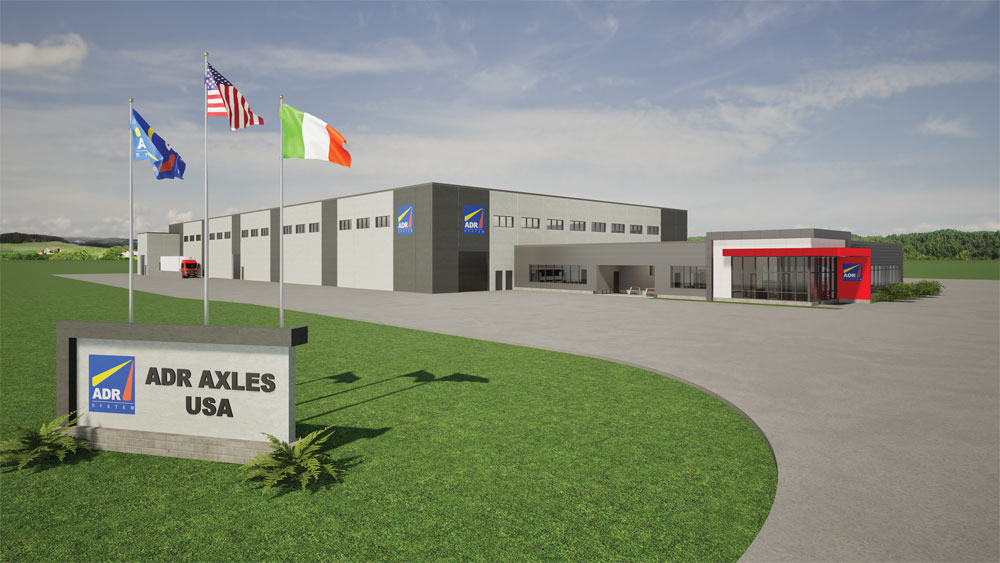Global company, global CEO
The new leader of Sauer-Danfoss Inc. has worked all over the world but says Ames plant must be a strong base

The global nature of Sauer-Danfoss Inc. isn’t hard to see. After all, visitors to its website can choose to view its corporate brochure in any of 10 languages. The Ames-based manufacturer of mobile hydraulic components for the heavy equipment industry is continuing its global tradition with its new president and CEO, Eric Alström. A Swedish native and naturalized U.S. citizen, Alström has lived and worked in North America, Asia and Europe.
During a recent visit to the Ames plant, Alström spent a week working on the shop floor to familiarize himself with the company’s products and processes. As that time ended, the 46-year-old gave a friendly wave to the team he’d worked with and shadowed for the past week, saying goodbye to each of them by name. “Take care – be safe,” he said.
A native of Sweden, the soft-spoken Alström spent 20 years in the automotive industry, 16 of them with General Motors Corp., where his last position was vice president of purchasing and supply chain for General Motors Europe. Most recently, he served as managing director of Benteler Automotive, a large German auto parts manufacturer. Hired by Sauer-Danfoss in August as president and CEO, Alström began his duties in October, and recently spent four weeks traveling to nine of the company’s manufacturing plants in Europe, Asia and the United States, as well as visiting six of its key manufacturing customers.
Working side-by-side with Sauer-Danfoss production teams was a vitally important experience, Alström said, after he removed his steel-toed boots and work apron.
“You can see all the quality processes on paper and they all look very sound, but it’s when you’re in the operations on the shop floor that you understand whether they work or not,” he said. “And it’s also to signal that I think it’s very important to focus on our operations and make sure we have the leanest, most efficient and productive operations in the industry. I think we still have a ways to go there. We’re very good, but we can become even better.”
A global family
Alström, who became a proud U.S. citizen in 2004, speaks English with less of an accent than many Minnesotans. In addition to his native Swedish, he’s fluent in German and also speaks French and Japanese fairly well.
He started his career with Saab in Germany before joining General Motors. He later transferred to Germany with GM and then moved on to the company’s Detroit headquarters for eight years, where he was executive director of worldwide purchasing. General Motors later moved him to Japan and then back to Germany. After leaving GM, he worked for four years for Benteler before the opportunity came up with Sauer-Danfoss, “which was just too tempting not to pursue,” he said.
Alström and his wife, Hope, who is from Chicago, have three children, each of whom was born in a different country. “We consider ourselves a bit like a global family,” he said. “One of our kids was born in the U.S., one in Japan and one in Germany. We just try to enjoy where we are.”
Though Alström is based at Sauer-Danfoss’ plant in Neumunster, Germany, he plans to visit the Ames plant frequently. In addition to serving as the company’s U.S. headquarters, Ames is headquarters for its Propel Division – soon to be renamed the Hydrostatics Division – which accounts for about 50 percent of the company’s annual revenue.
Through the crisis
Formed nearly 13 years ago through the 2000 merger of Sauer-Sundstrand and Danfoss Fluid Power, Sauer-Danfoss today operates 19 manufacturing plants in 11 countries. As a manufacturer of mobile hydraulic components for the heavy equipment industry, Sauer-Danfoss is ideally positioned for growth in a global economy that will need to feed millions more people and spend billions of dollars building new infrastructure, Alström said.
Despite promising demographic trends, Sauer-Danfoss continues to wrestle with the malaise of weakening global markets, which caused the company to narrow its annual earnings guidance earlier this year. The company anticipates that 2012 sales will be 5 to 10 percent lower than 2011 sales.
As with most manufacturers, the financial crisis of 2008-09 severely tested Sauer-Danfoss. During that time, the company reduced its global work force by approximately 4,000 workers, or about 40 percent. In Ames, nearly 400 full-time positions – approximately one-third of the full-time work force at that time – were eliminated. In 2009, sales decreased by 43 percent and the company reported net losses of more than $345 million. Issues that hadn’t been at the forefront, like cash flow and capital expenditures, “all of a sudden came on the agenda in a big way for this company,” Alström said.
“The management team and all the employees did a fantastic job managing through the crisis, making some really tough decisions on outsourcing, really going through what’s core and non-core for us as a company,” he said. Though the significant reduction in work force was “very painful,” it was also necessary to ensure the company’s future, he said.
“Now today, people are quite proud of what we did and what the team accomplished globally,” he said. “I’m humbled by joining this team in that sense. On the other hand, it’s time to look forward.”
A mixed year
Key to Sauer-Danfoss’ future are new technologies and products that are now in the development pipeline, such as innovative digital hydraulic components that will create new customers and markets for the company.
“We have a strong portfolio today, but some of the things in the pipeline will make us even stronger,” Alström said. “Electronically managed systems in the hydraulic space is today something the customer expects us to provide, and which we can. There is also a trend toward electrification in general; some of it is from the automotive world in terms of hybrid technology, and we’re seeing that as well.”
Growth in production may not necessarily bring the Ames work force back to its pre-crisis level, he said, given gains the company has made in productivity. And market demand will be a key determinant of growth.
“2012 so far has been a mixed year; it started quite well but softened very quickly during the summer,” Alström said. “So we need to be flexible and adjust ourselves to the market. But we’ll make sure we have a strong employment base in Ames; this is one of our most important facilities and will continue to be.”
At the same time, because the company has outsourced processes that aren’t core to its business, it has floor space available to fill in its plants, Alström noted.
“Now it’s management’s job to make sure we fill that productive floor space,” he said. “So it’s good news for all of our plants that we’re going to start focusing a lot on profitable growth.”
Q&A with Eric Alström
How do you see the mix of exports from the Ames plant changing?
Actually, I think we will see less direct exports from Sauer-Danfoss. … But for us, with our footprint in the U.S., the good news is that a lot of Asian manufacturers are establishing plants in the U.S. … We have our traditional customers – John Deere, Caterpillar and many others – and then we have a set of new customers that are not only in Asia but are also establishing plants in the U.S.
Is the skills gap a concern for your company, the industry?
I really don’t see a skills gap. In fact, if you look at U.S. manufacturing today in terms of efficiency and productivity, I think that the U.S. can be up there with some of the best. … Our success in emerging markets will generate more jobs and more opportunity in our plants here in the U.S. as well. So we need to expand our horizon a little bit and make sure that we see the benefit of being present in China, India and Brazil – which we are – and make sure that we have a global mindset when we discuss these things.
You seem to enjoy being on the shop floor. Would you say you have a hands-on leadership style?
I just love people; I love to work with people and I think I can learn something from everybody. That’s an attitude that I learned from my mother once upon a time, and I just kept on doing it and it’s been quite successful. But I’m not afraid of making tough decisions, either. I think that’s what people expect from leadership also: decision-making.











